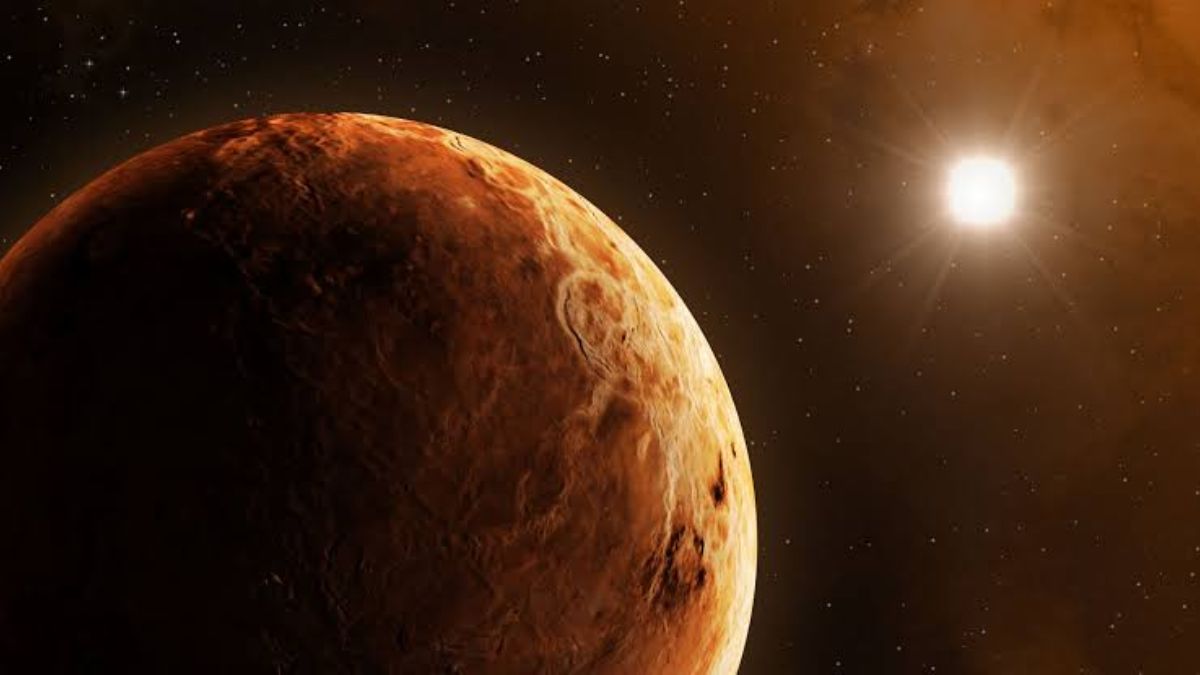India is preparing for a major space milestone with its upcoming Venus Orbiter Mission, Shukrayaan, scheduled for launch in 2028.
Nilesh Desai, Director of Isro’s Space Applications Centre (SAC), confirmed that the government has approved the project. First proposed in 2012, Shukrayaan aims to explore Venus, often referred to as Earth’s “twin” for its similar size and composition.
Let’s take a look at the Shukrayaan mission, why India is keen to study Venus, and why the planet is considered a challenge for engineers.
ALSO READ | ISRO & Australian Space Agency sign agreement to recover Gaganyaan Crew when they return to Earth
What is the Shukrayaan mission?
The Venus Orbiter Mission, known as “Shukrayaan-1,” is India’s first planned exploration of Venus.
The mission aims to study the planet’s surface, atmosphere, and geological structure. The spacecraft will be placed in orbit around Venus and will collect crucial data on its weather patterns, geological activity, and atmospheric composition. Advanced scientific instruments will be used for these observations.
A key focus will be understanding Venus’s dense cloud cover, primarily made up of carbon dioxide and sulphuric acid, and finding out any possible signs of volcanic formations.
To study the plant’s ionosphere, the satellite will be fitted with synthetic aperture radar, infrared and ultraviolet imaging devices among other tools, according to India Today.
While Nasa rules out the possibility of life on Venus, it has speculated that microscopic organisms could exist in the upper atmospheric layers, where conditions are similar to Earth’s surface pressure.
Impact Shorts
More ShortsALSO READ | Why Elon Musk's SpaceX and not Isro launched India's GSAT-N2 satellite
Why Isro’s Shukrayaan-1 mission is unique
Isro has said that the previous missions to Venus had limited and narrow spatial coverage, focusing either on the South-polar region or the equatorial belt. Its website reads, “Hence it is difficult to build global maps of many phenomena, including winds, waves, and chemical abundances. Venus Orbiter Mission would provide uniform coverage of Venus, thus providing a unique global dataset for future science missions.”
Data from the mission will be received, processed, and archived at the Indian Space Science Data Center (ISSDC), making it available for use by the scientific community both in India and internationally.
The Venus Orbiter is scheduled for launch in March 2028 and is expected to cost around Rs 1,236 crore, according to the space agency. ISRO has identified LVM-3 as the candidate launch vehicle, which will place the spacecraft into an Elliptical Parking Orbit (EPO) of 170 km x 36,000 km.
ALSO READ | What makes the Earth seem flat even though it’s round?
Why India is exploring Venus
Once thought to have oceans, Venus has evolved into a sweltering, inhospitable planet with surface temperatures reaching 470°C. By studying its climate, scientists hope to understand more about the dynamics of planetary atmospheres, climate change, and planetary evolution by comparing Venus with Earth.
Exploring Venus could also provide insights into Earth’s future and the environmental conditions necessary for sustaining life.
For Isro, the Shukrayaan mission would mark a huge advancement in space exploration. Despite Venus’ extreme conditions, successfully exploring the planet would put India alongside a select group of countries with cutting-edge planetary science expertise.
Why Venus is an engineer’s nightmare
Venus is infamous for its brutal environmental conditions, making it one of the most difficult planets to explore. With surface temperatures reaching 475°C, it’s hot enough to melt lead, presenting one of the most severe challenges to spacecraft.
The atmosphere, primarily made up of carbon dioxide and sulphuric acid, exerts pressures 92 times higher than that of Earth, creating a nearly impossible environment for exploration, India Today reported.
These harsh conditions make Venus an engineering nightmare. Any spacecraft sent to the planet must be capable of surviving extreme heat that would destroy most electronics and materials. The intense pressure demands reinforced designs that are similar to those used for deep-sea exploration vessels.
Further, Venus’s corrosive atmosphere, packed with sulphuric acid clouds, rapidly degrades materials, meaning that any equipment sent to the surface needs specialised coatings for protection, the report said. This harsh environment has limited previous missions, with landers surviving only a few hours before succumbing to the conditions.
Isro’s other future plans
Nilesh Desai recently announced that the government has approved the development of India’s own space station.
While the International Space Station has 16 pressurised modules, India’s planned space station, known as BAS, will have five, with the first module expected to launch in 2028.
“India’s space station will be ready by 2035. As a part of Prime Minister Narendra Modi’s call to land on the Moon by 2040, our space station will function as a transit facility en route, he said.
Further, Desai said that the proposed Chandrayaan 4 mission aims to not only land on the Moon but also return with soil and rock samples. He mentioned that India plans to collaborate with Japan on the Chandrayaan 4 mission, which will target the Moon’s south pole at 90 degrees south, compared to the 69.3-degree south landing of Chandrayaan 3.
He also revealed that the Chandrayaan 4 mission will feature a more precise landing and a rover weighing 350 kg, much heavier than the previous one. While the government’s approval is still pending, ISRO aims to launch the mission by 2030.
With inputs from agencies


)

)
)
)
)
)
)
)
)



